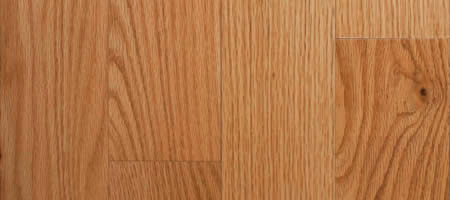Hardwood Flooring - Types & Sizes
All you need to know about Hardwood Flooring including the different types, sizes and costs.
Hardwood flooring is not only elegant, and creates an inviting ambiance in the home, it is also a great way to instantly increase the home's resale value. If you plan on selling in the near future, this is definitely a selling point any buyer would love to learn about. If you are on the fence between hardwood materials, whether or not to upgrade, or simply want to know the options available for you to choose from, this article will help you identify the best options, and ultimately choose the right material to upgrade your home's flooring.
Hardwood Flooring Sizes & Dimensions
The dimensions for your new hardwood floors will vary based upon the types of planks chosen, installation specifications, and the rooms in the home you plan on installing the new flooring in. Depending on your budget, and whether you choose to have the planks custom-fit or cut, the sizing/dimensions can be modified. It is important to discuss dimensions, details, design, and custom fabrication with installation professionals, prior to deciding on the best material and right size for your new hardwood flooring materials.
List of Most Common Sizes
- 14 to 20 mm - thickness
- 80 to 200 mm - width
- 200 to 2200 mm - length
- random lengths are common
Hardwood Flooring Types
Hardwood flooring comes in many varieties with numerous wood-grain options for homeowners to choose from. Depending on your personal preference, decor, and style, the material you ultimately choose will vary for each homeowner. Your budget is also going to be indicative of the choice made, as some woods are pricier than others. Regardless of the variety chosen, hardwoods are not only an elegant finish in any room, but truly help increase property value when listing a home for sale. Knowing the varieties, finishes, and quality, will help you choose the right material when installing new hardwood flooring. Below is a list of the most common types of hardwood flooring.
- Cherry
- Walnut
- Oak
- Pine
- Mahogany
Cherry

One of the varieties you can choose for new hardwoods is cherry wood. American Cherry is the most popular variety (also known as black cherry) for its red and pink hues throughout, giving the wood a distinct pattern and finish. It has a tight and wavy grain, lustrous finish, is sturdy, and is on the lower end of the photosensitivity rating, so it won't get damaged by light/sun easily.
Walnut

This hardwood species is available in multiple varieties, and is notable for the rich, dark brown colour, dark swirling grains, and purple hue which is visible from different angles. This softwood is best for dining rooms, or high-traffic areas, where sliding/movement is done in high volumes. The wood has a high-resistance to light damage, and it highly photosensitive, which makes it a good choice for rooms which are well-lit or receive plenty of sunlight.
Oak

Oak has a simplistic design, and is available in a red or white oak-finish. The red has a reddish hue throughout, while the white oak is often a pale or lighter brown colour. The wood is a mid-range in terms of hardness, and although it can withstand heavy weight, it is prone to scratching.
Pine

This is what most people think of when considering hardwoods. It has a bright, vibrant colour/texture, and is known for improving upon its appearance as it ages. It is prone to damage, and is one of the softer varieties, however, it is also one of the most affordable hardwood flooring options, making it popular amongst homeowners.
Mahogany

This grain is known for its straight-appearance, and reddish-brown timber colour. It is one of main tropical hardwood species, and is one of the softer materials in the spectrum of hardwoods. It is easy to preserve and maintains its structure well over time; it isn't prone to damage/scratching, as much as other grains.
Things to Consider before Buying
Hardwood floors come in various varieties, colours, and stains. Additionally, they can be custom-fitted and treated, and homeowners can choose from engineered wood grains. Depending on your budget, the decor, and where you plan on installing the hardwoods in the home, the material choice is going to vary from one room to the next. Additionally, the photosensitive nature of the woods also has to be considered. This is especially true in areas where plenty of sunlight enters the room, so as to avoid damaging or fading over time.
Homeowners should consider sealants, coating, and other protective barriers, to better preserve the wood, and maintain its original appearance over time after it has been installed in the home. And, any custom design, installation, or detail work which could be completed at the time of installation, should also be accounted for by the homeowner.
One additional factor to consider is the ongoing maintenance of hardwood. Most, if not all hardwoods will need regular attention including re-coating every few years as well as sanding and refinishing at least once every 10 years.







